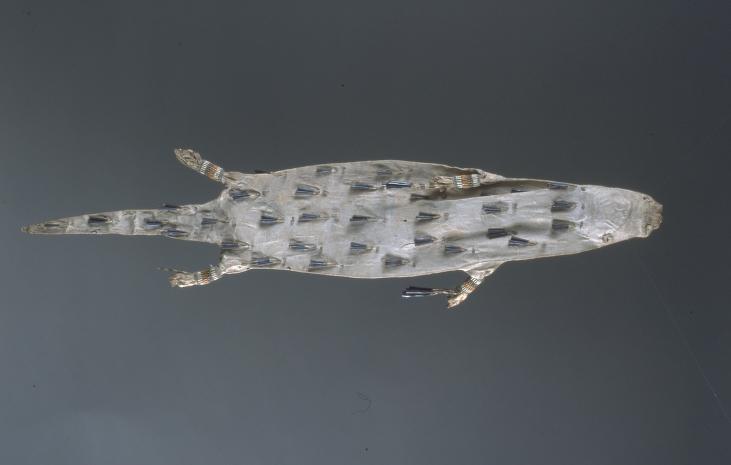|

(c) Pocumtuck Valley Memorial Association, Deerfield MA. All rights reserved.
Points of Contact : Sharing and Adapting
|
|
A well-established trade and communication network linked Native American groups. Kinship ties, trading relationships and political alliances sustained a complex web of interactions. Newcomers from Europe entering this long-established network affected it in a variety of ways. New alliances between coastal groups and Europeans upset previous alliances. New trade goods such as European textiles, worked metals, ammunition, and guns traveled along preexisting trade routes. Old World diseases like measles and smallpox traveled unseen with those goods, taking an astronomical toll on Native Americans never before exposed to such illnesses. The seemingly insatiable European demand for furs quickly depleted coastal supplies. Native hunters went farther and farther inland to obtain more, upsetting older agreements concerning hunting areas. Strained relations eroded alliances and sometimes led to warfare between tribes. By the mid-1600s, a growing trade imbalance with their European trading partners forced Native groups into an increasingly weakened negotiating position. This set the stage for the disputes over land the English "bought" from Native people who, by that time, had nothing left to settle trading debts owed to Europeans.
Trade was the earliest and, for most Europeans, the only point of contact between Native Americans and the Old World. Even whites who would never set foot in North America began smoking tobacco and wearing beaver hats. Throughout this period of change, dislocation, and invasion, Native Americans retained their cultural autonomy. They became eager consumers of European goods, but used them in ways that reflected their own cultural preferences and assumptions. The tin bugle beads that decorate this otterskin bag are but one example of the way in which both cultures integrated elements of the other into traditional forms and customs.
top of page
|
Otterskin Bag
| creator Ojibwa |
| date c. 1775 |
| location Great Lakes Region |
| length 31.0" |
| width 7.25" |
| process/materials otterskin, sinew, porcupine quills, tinned iron, deer hair |
| item type Ceremonial Artifact/ |
| accession # #IR.A.08 |
|





